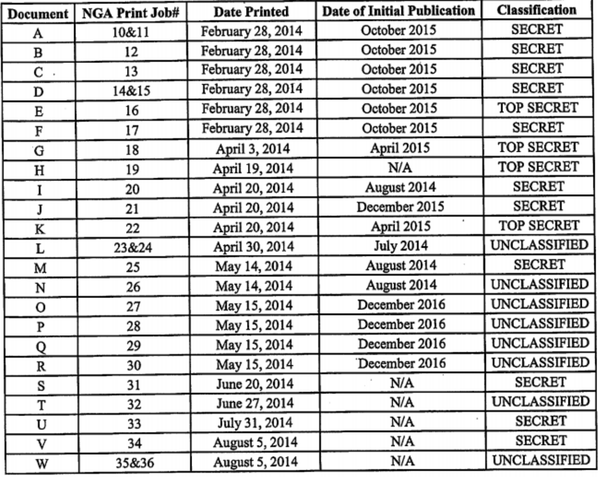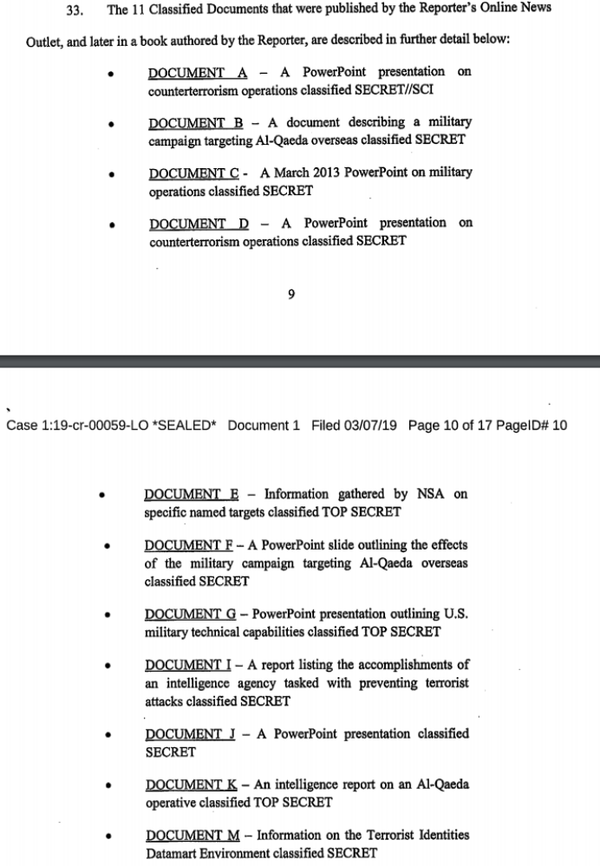Hale was enlisted in the US Air Force from July 2009 to July 2013, before being assigned to work at the National Security Agency (NSA) after undergoing language and intelligence training, according to the indictment. After parting ways with the service in 2013, Hale became employed by defense contractor Leidos and was assigned to the NGA as a political geography analyst between December 2013 and August 2014.
Hale's work for the NSA and later the NGA granted him a "Top Secret // Sensitive Compartmented Information" security clearance that allowed him "access to classified national defense information," the indictment reads.
The Tennessean first made contact with the unidentified reporter in April 2013, when Hale was still in the Air Force and working as an intelligence analyst with the NSA. The pair met on multiple occasions and kept in touch through encrypted messaging platforms.
However, it wasn't until February 2014 that Hale first began leaking information. The first leak saw the analyst print out six classified documents that went on to be published by the reporter's news outlet.
"While employed as a cleared defense contractor for NGA, Hale printed from his Top Secret computer 36 documents, including 23 documents unrelated to his work at NGA," reads a statement released by the Justice Department.
"Of the 23 documents unrelated to his work at NGA, Hale provided at least 17 to the reporter and/or the reporter's online news outlet, which published the documents in whole or in part. Eleven of the published documents were classified as Top Secret or Secret and marked as such.

The unsealed indictment notes that the leaks included a memo outlining a military campaign against al-Qaeda overseas, intelligence reports on an al-Qaeda operative and a PowerPoint presentation on military operations, among other documents.

Evidence obtained from Hale's home included two thumb drives, of which one held a folder marked "SECRET," and the other software related to Tor and the Tails operating system, which is meant to prevent internet spying. According to court documents, both systems were allegedly recommended to Hale by the reporter. Investigators also found the contact information for the reporter on Hale's cell phone.
Although court documents failed to identify the reporter or the news outlet in which the documents were published, media reports have speculated that details in the indictment point to Jeremy Scahill, a founding editor of The Intercept.
The indictment notes that the first six documents leaked by Hale went on to be published on October 15, 2015 — the same day that Scahill published a piece on The Intercept titled "The Assassination Complex."
The article states that the writing was based on a "cache of secret slides that provides a window into the inner workings of the US military's kill/capture operations at a key time in the evolution of the drone wars — between 2011 and 2013."
Though The Intercept has not confirmed the speculation, the news organization did release a statement regarding the charges after they were announced. "These documents detailed a secret, unaccountable process for targeting and killing people around the world, including US citizens, through drone strikes. They are of vital public importance, and activity related to their disclosure is protected by the First Amendment," wrote Betsy Reed, the outlet's editor-in-chief.
Hale is being charged with obtaining national defense information, retention and transmission of national defense information, causing the communication of national defense information, disclosure of classified communications intelligence information and theft of government property. He could face up to 50 years in prison if convicted on all five charges.




